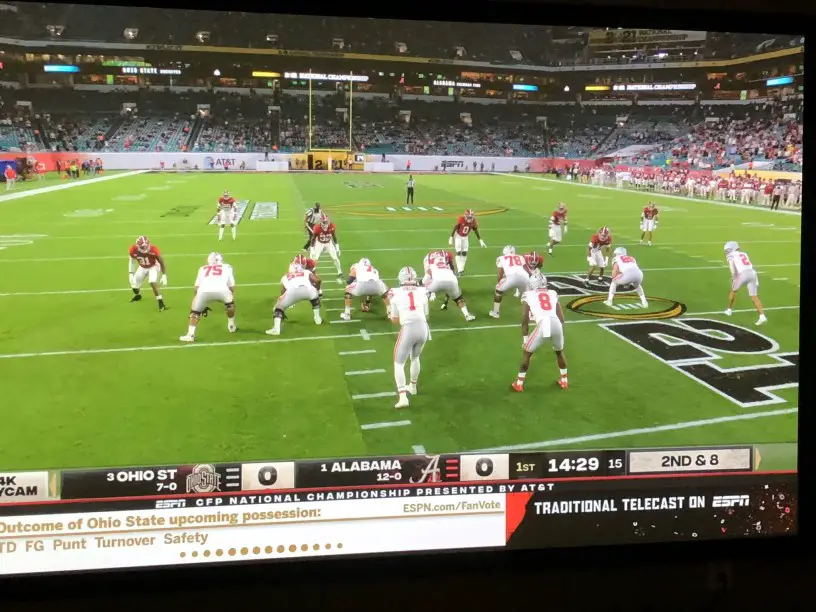Q. I watched the college football championship game on Monday night (January 11) in 4K on ESPN on my Comcast service. The picture was definitely clearer than the HD picture on my regular ESPN channel. But I noticed the colors didn’t seem as strong as they did during the Rams and Seahawks game (January 9) in 4K on Saturday. Why is that? They are both 4K so why should the color look better on one over the other? — Garrett, Miami.
Garrett, you are not alone. I have received several e-mails in the last few weeks from readers who can’t understand why their 4K picture seems to be different from one event to the next. There are several reasons for this, such as whether your TV is properly calibrated to how the network produces the event in 4K to possibly whether you’re watching it over the Internet or via cable or satellite TV. But for this column, let explain why you have noticed a difference between the 4K picture on ESPN and Fox, specifically for the games you mentioned.
Fox produces its sporting events, including NFL games, in 1080p and ‘upscales’ it to a 4K broadcast as opposed to shooting the event in 4K and transmitting in the same format. Upscaling is the process when one video format is converted to another. In this case, Fox takes the 1080p signal and converts it to a 4K format.
Click Amazon: See the New Year Discounts!
Upscaling 4K is different than what’s called, native 4K, which means the original event was produced in 4K, and broadcast or streamed in 4K as well. This is how ESPN produces its 4K sportscasts.
Many 4K enthusiasts say ESPN’s 4K picture is better than Fox because native 4K produces a sharper picture with more clarity and details. This shouldn’t be a surprise because when the event is ‘filmed’ in 4K and transmitted in the format as well, you are more likely to deliver the added resolution that 4K is known for.
In the case of the Alabama-Ohio State college football championship game on January 11, the picture did seem more precise and realistic than the Rams-Seahawks game two days before on Fox. From my vantage point, I won’t say the difference was dramatic, but it was noticeable.
However, from my viewpoint, and after reading the comments of several viewers on social media, I would say the Fox 4K broadcast displayed more vibrant colors. And there’s a reason for that.
Fox produces sports in 4K HDR (High Dynamic Range) rather than just 4K. HDR provides a more vivid picture, particularly more vivid colors. If done poorly, it can look like someone took out a few crayons and colored the images. But if it’s done right, the picture is more dynamic and evocative. You can really feel the action.
ESPN does not use HDR in its sportscasts, including the Alabama-Ohio State game. (Amanda Brooks, an ESPN spokesperson, kindly confirmed that for me today while on her vacation.) One ESPN executive told Sports Video Group in November 2019 that “as the HDR standard becomes unified across all platforms and devices, we will be prepared to add this feature down the road.” (There are multiple HDR formats and the industry is still battling over which ones to use.)
Minus HDR, ESPN’s 4K broadcasts lack that special sauce that can make a Fox 4K game particularly compelling. But the sports channel arguably makes up for it by doing native 4K, which creates a more accurate display.
Hopefully, the time is soon that all 4K broadcasts will be native and HDR. But until then, we will just have to learn to notice, and appreciate, the differences.
Garrett, hope that helps. Happy viewing, and stay safe!
Have a question about new TV technologies? Send it to The TV Answer Man at swann@tvpredictions.com. Please include your first name and hometown in your message.
— Phillip Swann



Thanks! I’m currently watching the 49ers v Cowboys, and the telecast has a gray tint. This helps,